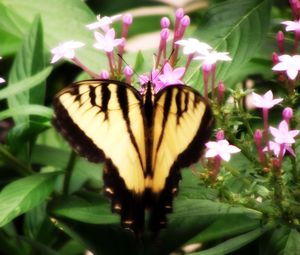When you think of endangered animals, what do you picture? Odds are good that you envision an exotic, beautiful mammal such as the giant panda, Siberian tiger, or Indian elephant. But among these visually stunning icons of the natural world, thousands of endangered animals go unnoticed. Invertebrates, such as insects, mollusks, crustaceans, and snails, lack the charisma of their spine-endowed counterparts. Many of them face imminent extinction, but go unnoticed because of their unappealing appearance or presumed lack of emotion.
A clam or a hornet may not seem like it’s worth defending, but invertebrates are a critical part of our world’s ecosystems. Without invertebrate animals, the systems we depend upon for our own survival would collapse entirely. An alarming example of this involves the honey bee, which pollinates over one-third of the crops grown in the United States. As colony collapse disorder threatens the species’ very survival, our own viability is put at stake.
There are several ways that involved consumers can help to save endangered invertebrates. Here are just a few ways that you can get involved.
1. Go vegetarian.
Hundreds of invertebrate species are threatened by international fisheries. Crustaceans, sea sponges, sea anemones and coral are all damaged by unsustainable fishing practices. Many, such as lobsters, crabs, and oysters, are killed intentionally during these offshore masacres, while others die as by-catch or as a result of ecosystem imbalance. If full-out vegetarianism isn’t an option for you, look into sustainable seafood as a greener alternative to conventional seafood.
2. Buy bee products.
Support organic beekeeping by purchasing local, pesticide-free honey in your area. Small-scale beekeepers are one of the last defenses we have against the colony collapse disorder epidemic. Other invertebrate-friendly bee products include beeswax candles, beeswax lip balms, and honey-made soaps. These protect honeybees, which are among the most important endangered invertebrates.
3. Support conservation.
Citing the International Union for the Conservation of Nature, or IUCN, Animal Planet regards habitat loss as the primary threat to endangered invertebrates. Help to protect invertebrate habitats by supporting conservation law in your area. Nonprofit organizations such as the Sierra Club, Nature Conservancy, and Sea Shepherd are working to protect regions where endangered invertebrates and vertebrates can both thrive.
4. End pesticide use.
Pesticides are, obviously, a major threat to the viability of endangered invertebrates. These products are designed specifically to destroy the fragile chitan exoskeletons of insects and crustaceans. Others release strong poisons into the air, water, and soil, which can harm “higher” animals such as amphibeans and fish. Buy organic foods whenever possible to protect endangered invertebrates. In your own home or garden, select natural, nontoxic pest control measures.
5. Volunteer for endangered invertebrates.
Get in touch with a zoo, aquarium, botanical garden, or nature park in your area to find out about local activities to protect endangered invertebrates. An organization in your area may have volunteer positions open to facilitate the captive breeding and re-release of endangered butterflies, mantises, mollusks, crustaceans or other invertebrates native to your own region. Contact these organizations to find out how you can help with these projects. You may be able to assist the organization, plant essential botanicals on your property, or even raise your own endangered species larvae for re-release. Hands-on involvement is essential for the overall viability of wild invertebrate populations.







